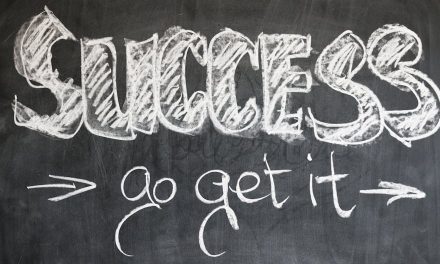Table of Contents
- Introduction
- The Power of Synergy: How Collaboration Enhances Team Performance
- Building Trust and Communication: Key Elements for a Successful Collaborative Team
- Leveraging Diversity: Harnessing the Strengths of Different Perspectives in Team Collaboration
- Effective Leadership in Collaborative Environments: Strategies for Constructing an Exceptional Team
- Q&A
- Conclusion
Harnessing the Strength of Collaboration: Constructing an Exceptional Team
Introduction
Introduction:
Harnessing the Strength of Collaboration: Constructing an Exceptional Team
Building a successful team is crucial for any organization aiming to achieve exceptional results. In today’s fast-paced and complex business environment, collaboration has become a key driver of success. By harnessing the strength of collaboration, organizations can tap into the diverse skills, knowledge, and perspectives of their team members to achieve greater innovation, productivity, and overall performance. This article explores the importance of constructing an exceptional team through effective collaboration, highlighting the benefits it brings and providing insights into how organizations can foster a collaborative culture to maximize their team’s potential.
The Power of Synergy: How Collaboration Enhances Team Performance

Collaboration is a powerful tool that can greatly enhance team performance. When individuals come together and combine their unique skills, knowledge, and perspectives, they can achieve remarkable results. This article explores the power of synergy and how collaboration can help construct an exceptional team.
One of the key benefits of collaboration is the ability to tap into a diverse range of ideas and expertise. When team members with different backgrounds and experiences come together, they bring with them a wealth of knowledge and perspectives. This diversity can lead to more innovative and creative solutions to problems. By pooling their resources and working together, team members can leverage each other’s strengths and compensate for each other’s weaknesses.
Collaboration also fosters a sense of ownership and accountability among team members. When individuals feel that their ideas and contributions are valued, they are more likely to take ownership of their work and strive for excellence. This sense of ownership can lead to increased motivation and productivity, as team members are invested in the success of the team as a whole.
Furthermore, collaboration promotes effective communication and teamwork. When team members work together towards a common goal, they must communicate effectively and coordinate their efforts. This requires active listening, clear and concise communication, and the ability to work well with others. By practicing these skills, team members can build strong relationships and trust, which are essential for a high-performing team.
In addition to these benefits, collaboration also promotes learning and professional growth. When team members collaborate, they have the opportunity to learn from each other and expand their knowledge and skills. This can lead to personal and professional development, as team members gain new insights and perspectives. By working together, team members can also share best practices and learn from each other’s successes and failures.
To harness the strength of collaboration and construct an exceptional team, it is important to create an environment that fosters collaboration. This can be achieved by promoting open and transparent communication, encouraging active participation, and providing opportunities for team members to collaborate on projects and tasks. It is also important to establish clear goals and expectations, so that team members understand the purpose and objectives of their collaboration.
Transitional phrases such as “Furthermore,” “In addition to these benefits,” and “To harness the strength of collaboration” help guide the reader through the article and ensure a smooth flow of ideas. These phrases signal a shift in focus or introduce a new point, allowing the reader to follow the logical progression of the article.
In conclusion, collaboration is a powerful tool that can greatly enhance team performance. By tapping into a diverse range of ideas and expertise, fostering a sense of ownership and accountability, promoting effective communication and teamwork, and facilitating learning and professional growth, collaboration can help construct an exceptional team. By harnessing the strength of collaboration, teams can achieve remarkable results and overcome challenges more effectively.
Building Trust and Communication: Key Elements for a Successful Collaborative Team
Building Trust and Communication: Key Elements for a Successful Collaborative Team
In today’s fast-paced and interconnected world, collaboration has become an essential component of success in any organization. The ability to work effectively with others, leveraging their strengths and expertise, is crucial for achieving exceptional results. However, building a successful collaborative team is not an easy task. It requires a strong foundation of trust and open communication, which are the key elements that enable teams to thrive and achieve their goals.
Trust is the cornerstone of any successful collaboration. Without trust, team members may hesitate to share their ideas, take risks, or support one another. Trust is built over time through consistent actions and behaviors that demonstrate reliability, integrity, and respect. It is important for team leaders to create an environment where trust can flourish by setting clear expectations, providing support, and fostering a culture of transparency and accountability.
Open communication is another vital element for a successful collaborative team. Effective communication ensures that team members are on the same page, understand their roles and responsibilities, and can openly express their thoughts and concerns. It is essential for team leaders to establish channels for communication that are accessible and inclusive, allowing everyone to contribute and be heard. Regular team meetings, one-on-one check-ins, and virtual collaboration tools can facilitate open communication and keep everyone informed and engaged.
Transparency is a key aspect of open communication. Team members should feel comfortable sharing information, ideas, and feedback without fear of judgment or reprisal. This requires creating a safe and non-judgmental space where everyone’s contributions are valued and respected. Team leaders can foster transparency by actively listening to their team members, encouraging diverse perspectives, and providing constructive feedback. By promoting a culture of openness, team leaders can build trust and strengthen communication within the team.
In addition to trust and open communication, a successful collaborative team also requires clear goals and roles. Team members need to understand the purpose and objectives of their collaboration, as well as their individual responsibilities and contributions. This clarity helps to align everyone’s efforts and ensures that the team is working towards a common goal. Team leaders should set clear expectations, establish measurable objectives, and provide regular feedback to keep everyone focused and motivated.
Another important element for a successful collaborative team is diversity. A diverse team brings together individuals with different backgrounds, perspectives, and skills, which can lead to more innovative and creative solutions. Team leaders should actively seek out diversity in their teams and create an inclusive environment where everyone feels valued and respected. By embracing diversity, teams can tap into a wider range of ideas and experiences, leading to better decision-making and problem-solving.
Finally, a successful collaborative team requires ongoing support and recognition. Team leaders should provide the necessary resources, training, and guidance to help their team members succeed. They should also acknowledge and celebrate the achievements and contributions of their team members, fostering a sense of pride and motivation. By providing support and recognition, team leaders can create a positive and empowering environment that encourages collaboration and drives success.
In conclusion, building a successful collaborative team requires a strong foundation of trust and open communication. Trust is built through consistent actions and behaviors that demonstrate reliability, integrity, and respect. Open communication ensures that team members are on the same page, understand their roles and responsibilities, and can openly express their thoughts and concerns. By fostering trust, open communication, clear goals and roles, diversity, and ongoing support and recognition, team leaders can construct an exceptional team that achieves outstanding results.
Leveraging Diversity: Harnessing the Strengths of Different Perspectives in Team Collaboration
Leveraging Diversity: Harnessing the Strengths of Different Perspectives in Team Collaboration
In today’s fast-paced and interconnected world, collaboration has become an essential component of success in any organization. The ability to work effectively with others, leveraging their unique perspectives and strengths, can lead to innovative solutions and improved outcomes. One key aspect of collaboration is the diversity of the team members involved. By harnessing the strengths of different perspectives, teams can achieve exceptional results.
Diversity in a team can take many forms, including differences in gender, age, ethnicity, educational background, and professional experience. Each team member brings their own set of skills, knowledge, and experiences to the table, which can greatly enrich the collaborative process. Research has shown that diverse teams are more likely to generate creative ideas and make better decisions compared to homogeneous teams.
One of the main benefits of diversity in team collaboration is the ability to approach problems from multiple angles. When team members have different perspectives, they can offer unique insights and alternative solutions that may not have been considered otherwise. This diversity of thought can lead to more innovative and effective problem-solving, as well as a broader range of options to choose from.
Furthermore, diverse teams are better equipped to understand and cater to the needs of a diverse customer base. In today’s global marketplace, organizations must be able to connect with customers from different cultures and backgrounds. By having team members who can bring their own cultural insights and experiences to the table, organizations can develop products and services that are more inclusive and relevant to a wider range of customers.
However, harnessing the strengths of different perspectives in team collaboration is not without its challenges. It requires effective communication and a willingness to listen and understand different viewpoints. It also requires creating an inclusive and respectful environment where all team members feel valued and empowered to contribute their ideas.
To foster effective collaboration in diverse teams, it is important to establish clear goals and expectations from the outset. This helps to align team members towards a common purpose and ensures that everyone is working towards the same objectives. Additionally, providing opportunities for team members to get to know each other on a personal level can help build trust and rapport, which is essential for effective collaboration.
Another important aspect of leveraging diversity in team collaboration is the role of leadership. Leaders must actively promote and support diversity within their teams, ensuring that all team members have an equal voice and opportunity to contribute. They should also encourage open and respectful communication, and be willing to challenge their own assumptions and biases.
In conclusion, harnessing the strengths of different perspectives in team collaboration is crucial for achieving exceptional results. By embracing diversity and creating an inclusive environment, teams can tap into a wealth of knowledge and experiences that can lead to innovative solutions and improved outcomes. However, it requires effective communication, a willingness to listen, and strong leadership. Organizations that prioritize diversity in their teams will be better equipped to navigate the complexities of today’s global marketplace and drive success.
Effective Leadership in Collaborative Environments: Strategies for Constructing an Exceptional Team
Effective leadership in collaborative environments is crucial for constructing an exceptional team. Collaboration is the process of working together towards a common goal, and when harnessed properly, it can lead to remarkable outcomes. However, building a successful team requires more than just bringing individuals together; it requires a leader who can guide and inspire the team to achieve greatness.
One strategy for constructing an exceptional team is to foster a culture of trust and open communication. Trust is the foundation of any successful collaboration, as it allows team members to feel safe and supported in sharing their ideas and opinions. A leader can cultivate trust by being transparent, honest, and reliable. They should encourage open communication by creating an environment where everyone’s voice is heard and respected. This can be achieved through regular team meetings, one-on-one check-ins, and providing opportunities for feedback and input.
Another important aspect of constructing an exceptional team is ensuring that each member’s strengths and skills are utilized effectively. A leader should take the time to understand the unique abilities of each team member and assign tasks accordingly. By doing so, they can maximize the team’s potential and create a sense of purpose and fulfillment for each individual. This also promotes a collaborative spirit, as team members can learn from one another and support each other’s growth.
In addition to leveraging individual strengths, a leader should also encourage collaboration and teamwork. This can be achieved by fostering a sense of shared purpose and creating opportunities for team members to work together towards common goals. Collaboration allows for the pooling of diverse perspectives and ideas, leading to innovative solutions and better decision-making. A leader can facilitate collaboration by organizing team-building activities, promoting cross-functional projects, and encouraging regular knowledge sharing and brainstorming sessions.
Constructing an exceptional team also requires effective conflict management. Conflict is inevitable in any collaborative environment, but it can be detrimental if not addressed properly. A leader should be skilled in resolving conflicts and promoting healthy dialogue. They should encourage team members to express their concerns and opinions openly, while also facilitating a respectful and constructive discussion. By addressing conflicts promptly and finding mutually beneficial solutions, a leader can prevent conflicts from escalating and maintain a harmonious team dynamic.
Lastly, constructing an exceptional team requires ongoing support and recognition. A leader should provide guidance, mentorship, and resources to help team members succeed in their roles. They should also acknowledge and celebrate individual and team achievements, as this fosters a positive and motivating work environment. Recognizing and rewarding exceptional performance not only boosts morale but also encourages continuous improvement and dedication.
In conclusion, effective leadership in collaborative environments is essential for constructing an exceptional team. By fostering a culture of trust and open communication, leveraging individual strengths, promoting collaboration, managing conflicts, and providing ongoing support and recognition, a leader can create a high-performing team that achieves remarkable results. Constructing an exceptional team is not an easy task, but with the right strategies and a dedicated leader, it is possible to harness the strength of collaboration and achieve greatness.
Q&A
1. What is the importance of collaboration in constructing an exceptional team?
Collaboration is crucial in constructing an exceptional team as it allows individuals to pool their diverse skills, knowledge, and perspectives to achieve common goals more effectively.
2. How does collaboration contribute to the strength of a team?
Collaboration enhances the strength of a team by fostering open communication, trust, and mutual support among team members. It promotes innovation, problem-solving, and the ability to adapt to challenges.
3. What are some key benefits of harnessing collaboration within a team?
Key benefits of harnessing collaboration within a team include increased productivity, improved decision-making, enhanced creativity, better conflict resolution, and a sense of shared ownership and accountability.
4. What strategies can be employed to harness the strength of collaboration within a team?
Strategies to harness the strength of collaboration within a team include fostering a culture of trust and respect, promoting effective communication and active listening, encouraging diverse perspectives, providing opportunities for skill-sharing and learning, and establishing clear goals and roles for each team member.
Conclusion
In conclusion, harnessing the strength of collaboration is crucial for constructing an exceptional team. By fostering a culture of teamwork, encouraging open communication, and leveraging the diverse skills and perspectives of team members, organizations can achieve higher levels of productivity, innovation, and success. Collaboration allows for the pooling of knowledge, resources, and ideas, leading to more effective problem-solving and decision-making. It also promotes a sense of ownership and accountability among team members, fostering a positive work environment and enhancing overall team performance. Therefore, investing in collaboration and building exceptional teams is essential for organizations aiming to thrive in today’s competitive landscape.




